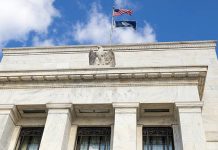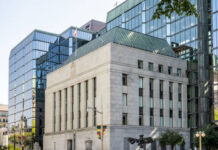Markets
This week’s long-drawn countdown to the US September CPI finally resulted in a few hours of extremely volatile trading annex a historic intra-day market reversal, in particular in US equities. Hoped for signals of inflation topping out again didn’t materialize. Headline inflation hardly eased (0.4% M/M and 8.2% Y/Y, from 8.3%). US core inflation (6.6% Y/Y) even jumped to the highest level since 1982 as the monthly pace (0.6%) stays uncomfortably elevated. In a first logical Pavlov reaction, the US yield curve inverted with the 2-y jumping north of 4.50% while 10 & 30y yields tried to take out the 4.0% barrier. Money markets embraced the idea of two additional 75 bps Fed rate hikes in November and December. The S&P opened about 2.50% lower. However, technical factors came into play. Amongst others, the S&P touching the 50% retracement of the post-corona rally triggered a squeeze on recent bearish positioning. In an impressive comeback, US indices closed up to 2.60% (S&P) and 2.83% (Dow) higher. US yields also eased back below above mentioned high profile levels. In the end US yields rose ‘modestly’ between 8.3 bps (5-y) and 4.2 bps (30-y). In a flattening move, German yields closed 9.4 bps higher for the 2-y but eased 5.5 bps for the 30-Y. USD gains already stayed relatively modest immediately after the CPI release and the US currency even fell prey to profit taking as the risk rally unfolded. The DXY index eased back to close at 112.36. EUR/USD also easily stayed away from the cycle low to close at 0.9776 (open 0.9703). USD/JPY spiked to test the 147.66 1998 top, but no sustained break occurred. For now there is no communication on interventions. UK markets also had a good run yesterday. Persistent BOE presence in the bond market and headlines on the UK government downscaling fiscal spending pushed UK yields more than 20 bps lower across the curve. Sterling outperformed (EUR/GBP close 0.8632).
This morning, Asian markets joined the risk rebound from WS yesterday. The Nikkei and the Hang Seng are outperforming with gains of 3.0%+. US Treasuries gain marginally. The dollar eases against the likes of the Kiwi and the Aussie dollar. USD/CNY trades modestly lower at 7.166. EUR/USD also gains modestly (0.978). The yen stays in the defensive. At USD/JPY 147.45, the pair is holding near the multi-year peak. Later today, the market focus stays on the US with the US September retail sales and the U. of Michigan consumer confidence (including inflation expectations measures). Control group retail sales are expected at 0.3% M/M. Yesterday’s post CPI market reaction suggests that data probably will have to be extremely strong to push US yields sustainably beyond the 4.50% (2-y)/4.0% (10/30-y) barriers. That said, there is evidently also no reason of the Fed to backtrack on its anti-inflationary rhetoric. In this context, US yields might consolidate near recent highs. Aside from further technical repositioning, equities from now on will have to cope with the Q3 earnings (major US banks today) and probably even more with enterprises’ guidance. Here we are not convinced on sustained reversal in sentiment for the better yet. The dollar recently could have gained more given the overall risk sentiment and developments on interest rate markets. Here some consolidation might be on the cards, with EUR/USD looking for a short-term equilibrium in the 0.95/1.00 trading range.
News Headlines
ECB sources are in full swing. After yesterday’s leaked details on final options to change TLTRO modalities, Bloomberg now reports on growing consensus on the process of shrinking the balance sheet. Discussions started at last week’s meeting in Cyprus. Officials favor letting bonds mature rather than resorting to debt sales, though that option shouldn’t be entirely excluded. They could also envisage keeping up some reinvestments to moderate the pace of unwinding. ECB members want to wait until policy rates hit neutral (December) before starting the portfolio roll-off. This implies that the second pillar of normalization/tightening will most likely come into effect early 2023.
Chinese inflation accelerated less than forecast in September, rising from 2.5% Y/Y to 2.8% Y/Y. Underlying core inflation even slowed from 0.8% Y/Y to 0.6% Y/Y. Underlying Chinese demand remains weak as shown for example by consumer discretionary prices or services inflation (0.5% Y/Y). The strict zero Covid-policies are one of the main culprits. Chinese producer price inflation slowed from 2.3% Y/Y to 0.9% Y/Y.













